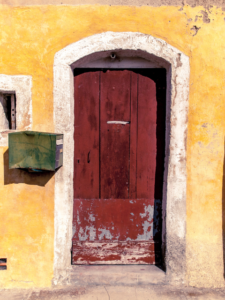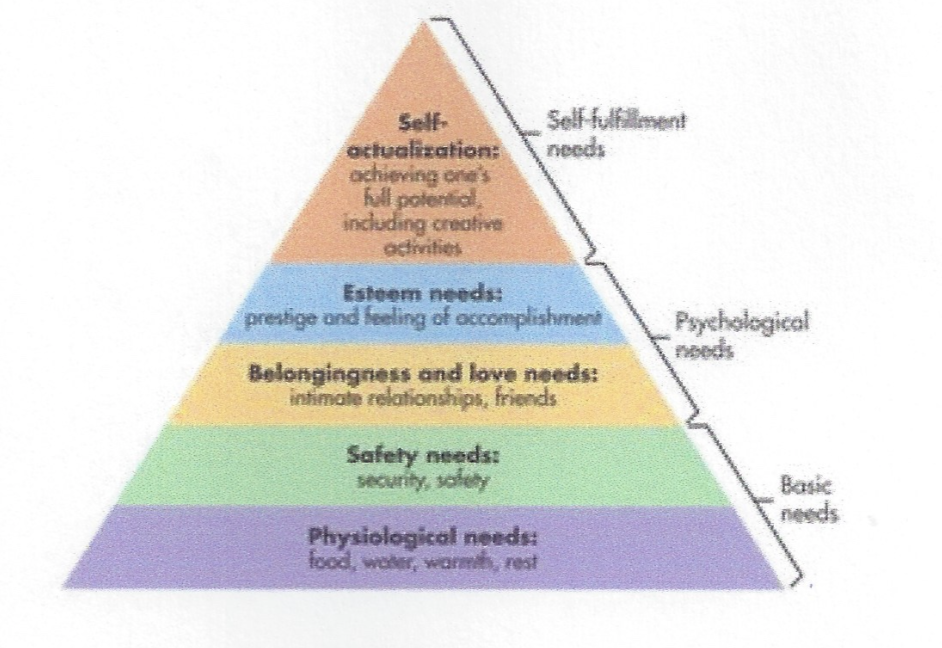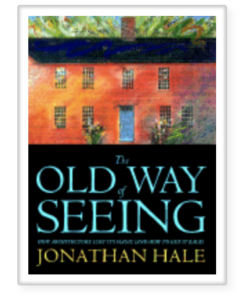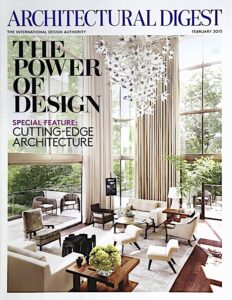In Lesson I, I projected my opinion that the reason people decorate is to get “energy.” This is not the scientific definition of the word but a life force. In the West we don’t have a word for this concept so we just use other terms like the Eastern “chi,” subtle energy, or just energy. Using the “energy” word, however, can cause problems in a culture that may not be receptive to its alternative use. It is important, however, to explore this word because people seem to have an urge to address it in their environments. This lesson, Using the “Energy” Word, Lesson II is an exploration in how individuals struggle to get their needs met in a culture that has no room for these concepts. For simplicity, in future writings, I will mostly use use the the spelling Energy to refer to this life force.
The Beginnings of Metaphysical Decorating
I started my metaphysical thinking about decorating in earnest when I started teaching in the inner city. The first of three schools was particularly violent and I started using decorating techniques to address vandalism. This led to a workshop where I taught teachers to do the same. (See the blog, School Vandalism – The Bureaucratic Community. )
By the time, I got to the last school, the purpose of my school decorating had changed. This school was located in the South Bronx, a notorious area for crime and gang violence. The school was smaller and very well run, however, and my decorating wasn’t needed to stop vandalism. Instead as I decorated, I eventually came to the realization that I was decorating for Energy. There was a need for this since our students would have to leave the building and find themselves in depleting environments.
I first heard the concept of Energy with my classroom. Teachers would come to the room when it was available and ask to be able to sit there for a few minutes exclaiming that the room “energized” them. Students said the same. I decorated the room according to the two themes of my book. Energy in decorating comes about through the geometric scaffolding behind what we see and our relationship to the objects in our environment.
Student Decorators
In the last school where I taught, I had many new jobs. I was now supervising as well as teaching. I became chair of the Special Education department and took on several additional jobs. One was called Transition, which helped prepare special-needs students for employment. To this end, the city set aside an attractive minimum wage to pay students for summer and after-school jobs.
Most of the after-school jobs placements were in hospitals or daycare centers. At first I only had the financial backing for five students. As time went on, I received enough backing for fifteen jobs but could not find placements for four students. So, rather than wait for a hospital or daycare placement, four young women start their own business. It was fine with the agency running the program as long as I supervised.
The student called their business Grimebusters. Upon request, they decorated and tidied classrooms after school. They created artwork for the walls, made bulletin boards, washed blackboards, straightened bookshelves, repaired wall decorations, and maintained plants. (I rounded up neglected plants in my neighborhood for them. Soon every classroom had an array of lovely greenery.)
Grimebusters had constant work. They created a logo for their tee shirts, flyers, and business cards. Until recently, I didn’t realize that such student environmental care was a treasured and well-respected tradition in some of Asia.
Student Decorators in the East
It’s a Japanese tradition, o-soji, for students to clean their schools. The schools employ janitors, but for 15 minutes after classes, each schools’ students sweep, dust, and do other tasks that return their environment to order.
It’s based on a 17th-century belief that clean and clear surroundings contribute to one’s mental clarity. Unlike the Grimebusters, the Japanese students are unpaid. Their 15 minutes are expressions of gratitude to people and objects that help them learn. They consider classrooms alive.
Many in the East openly acknowledge their belief that matter is alive. Many of us in the West would think this way, I believe, but would face ridicule doing so. So, we create round-about ways to believe in the living Energy that surrounds us. I call this “going around to the back door.”
Going Around to the Backdoor
Let’s use backdoor for the euphemisms we use to express Energy indirectly. We feel a need to explore it and talk about it directly, but we fear being labeled as countercultural or scientifically illiterate. Burglars enter a backdoor to steal our belongings. Hackers use backdoors to steal the rest of us. I believe the rest of us use backdoors to even think about Energy.
Backdoors for Energy reveal Westerners’ suffering an important inner conflict. Are material things alive in a real sense, as the East sees it? Or, are they inert, dead, as a Western perspective has it? To make room for science, a powerful way to live our lives, certainly, the West has drained spirit from matter. It seems obvious to me that material things aren’t dead, that there is spirit in them. The spirit-matter divide makes it hard for us to see reality animalistically and scientifically at the same time.
Since we Westerners need spirit’s Energy no less than the East needs it, we awkwardly try to straddle both beliefs. On one hand, we need to connect with the spirit of things; on the other hand, we cling to our cultural norms. In a culture hostile to animism, we are also afraid to meet our needs for Energy. Backdoors provide a temporary answer, but they expose our unfortunate fear of even talking about Energy.

The Backdoors Behind Decorating
Examining the backdoors around decorating offers insight into the Western conflicts over spirit and matter. Here are three of our backdoors:
- We look to the East
- We hide behind metaphors
- We misuse science
It’s a basic human need, I believe, to be nourished by our spiritual surroundings. Whether buying, collecting, or decorating, our keen attention to material things is an unconscious search for Energy. I believe it gives rooms their oomph, homes their embracing arms, and all spaces, private or public, a connection to an energizing force.
Backdoor One: Looking to the East for Answers
 Feng Shui has become the favorite way of looking Eastward. According to Luminous Spaces, around 368K Americans are regular visitors to Feng Shui sites. People google the term every second, totaling two million times every month. Amazon alone sells 12,449 different Feng Shui books.
Feng Shui has become the favorite way of looking Eastward. According to Luminous Spaces, around 368K Americans are regular visitors to Feng Shui sites. People google the term every second, totaling two million times every month. Amazon alone sells 12,449 different Feng Shui books.
Feng shui is an ancient Chinese practice to increase chi or Energy in one’s environment by the placement of objects. It espouses that everything has chi, even inanimate objects. When this Energy is allowed to move freely, prosperity, health and relationships supposedly improve dramatically.
Feng Shui is a successful system. It has demonstrated a connection between energy and matter in the aesthetic realm. Using it exclusively, however, presents an issue. Even though it is somewhat diffused in the West, it simply cannot be fully understood. Using Feng Shui seems almost mystical, certainly magical: if we move, add or remove various objects around, we will create chi, which will bring prosperity. Such magical thinking, however, has its downside. More power is present in our actions when we understand how they can affect us.
***

Another popular Eastern program is Marie Kondo’s. Her book, based on animism -that all matter is alive. Her first premise is to take all your things of a like nature-say all your shoes- and put them in the middle of the floor. Then she asks that one hold one pair at a time and feel if it gives you joy. If it does not, dispose of them.
In the view of the animist, all things are alive and we have a relationship with objects. If we feel joy, we are interacting with this object as a sentient thing. If we feel nothing, it is time to let it go.
I have often observed how some individuals adopt an Eastern program involving matter yet only embrace it only partway. My relatives, for example, once decided to use Marie Kondo’s tidying method to de-clutter their houses. When I asked them if they knew that the program was based on animism, that is all matter was alive, they hesitated. While they were happy to follow the how-to’s, they stopped when asked to consider that their socks and shoes had feelings. That suggestion was too much for them.
Going partially to the East and not embracing it fully because of Western cultural beliefs creates a divided self, and in that division, we send out a weakened intention.
Most important of all, Westerners need to recognize that if they go to the East for answers, they should go there fully. To more full explain this cultural divide of the East and the West, I compared Feng Shui with the work of Abraham Maslow, a Western psychologist.
Maslow’s Work
Abraham Maslow’s hierarchy of values or needs has often been expressed in pyramids. The idea is that people must address their most basic needs, the needs of their bodies, before they can address other needs. One must have food in the belly before thinking about safety, for instance. Once people are safe and nourished, they start to worry about their needs for friendships and love. In turn, only when those needs are satisfied do they fret about self-esteem. Maslow’s final need, the level at which they can be fully human, he calls self-actualization.

Simply Psychology
Maslow’s Work Interpreted with a Humorous Twist
In the tech age, food is not the most important first step.
.
Aesthetics Is Part of the Pyramid
Western culture has absorbed Maslow’s hierarchy of needs, but I have found diagrams that reflect different hierarchical orders. For instance, here’s a step pyramid placing beauty and harmony at the top. It places the human need for beauty as the final level. One example is:

It is clear from this Western diagram that to achieve beauty, one must first have other needs met, including food, shelter, security and companionship.
Feng shui’s hierarchy of needs would place prosperity as more basic level than food, shelter, security, and love.
Feng Shui Pyramid
So, I built a pyramid of values based on how feng shui and other life force Energy systems work. Compare it with the last Maslow diagrams and look where beauty lies.

- Feng Shui indicates that aesthetics causes prosperity.
- Maslow’s hierarchy of values indicates that prosperity must be in place before aesthetics can be reached.
The thinking behind Maslow’s psychological pyramid is throughout Western culture. For example, form follows function is an architectural slogan — practicality before beauty. For feng shui, the slogan would have to be reversed: function follows form. Westerners using feng shui in design but steeped in a form-follows-function culture swim must against a deeply ingrained, often subliminal current.
My scientist friend agrees with Maslow. After all, he says, “A thing of beauty is a ham sandwich when you’re hungry.” Chuckling, I ask him why the belly or the spirit must be feed first. Why not both at once?\
Backdoor Two: Hiding Behind Metaphors
 Metaphors can be a way of expressing esoteric ideas without taking responsibility for believing in them. It is a way of survival in the West. Jungian scholars use this backdoor in their writings. Their prose is beautiful, almost resembling poetry with metaphorical illusions to their theories. As psychologists, they are scientists but their discipline often takes them beyond what is provable.
Metaphors can be a way of expressing esoteric ideas without taking responsibility for believing in them. It is a way of survival in the West. Jungian scholars use this backdoor in their writings. Their prose is beautiful, almost resembling poetry with metaphorical illusions to their theories. As psychologists, they are scientists but their discipline often takes them beyond what is provable.
Take the brilliant James Hillman. In his book, The Soul’s Code, He debunks both nurture and nature as responsible for forming the human character. Instead he refers to the core of character as based on the Greek Daimon, the indwelling spirit or an acorn which is already encoded with the trajectory of a person’s calling. As I read it, I kept questioning, “Isn’t his use of the word “acorn” just another word for reincarnation, an Eastern concept that is not user-friendly in the West?
Metaphors in Design
The Old Way of Seeing, by the architect Jonathan Hale, is a brilliant book on design. I reflect his inspiration throughout this book. Hale, however, never comes right out and names the core of his idea, Energy, chi, or some other noun that the non-Western world uses to name it.
He uses a backdoor.
Our culture doesn’t allow us to admit that Energy exists. Yet we know that it does since we constantly build metaphors that depend on Energy without naming it.
To describe how Western artists once thought of beauty, Hale uses the terms alive, dullness, lifeless, magic and other lovely words metaphorically. For example:
“the old buildings sang,”
Obviously, buildings don’t sing. Something else must be singing. That something else is Energy. In other words, the metaphor should be that “the Energy of old buildings sing.”
More Metaphors Exposing the Fear of Using the “Energy” Word
Other institutions which use this backdoor are design books and magazines. In a short time, going through five major design magazines, I found the following words used in metaphors for recharging or depleting energy:
- dynamic, alive, invigorating, clarifying, magical, nurturing, mood enhancing, warm, stimulating, exciting, inspiring, loving environment, refreshing, aglow, vibrant, magnificent, spectacular
- quiets the mind, ennobles the spirit, calming, reduces anxiety, serene or serenity, realigning, reconnecting, recharge or recharging, rebuilding, restful
- depleting, stagnant, worn out, exhausting, rut
Although the adjective, “energetic,” was used once, no publication used the word Energy or such term. One Architectural Digest’s front cover boasted in loud print “The Power of Design.”
What is powerful, dynamic, invigorating, depleting, or quiets the mind is the level of Energy the design creates.
Backdoor Three: Misusing Science
Another backdoor to using the words subtle energy is attempting to prove it scientifically.
Since quantum physics was popularized a couple of decades ago, many non-scientific writers have begun using it to “prove” their ideas. They make horrible mistakes, but it has become truth for them. These writers are sometimes pejoratively called “quantum mystics.“
I fell into that trap myself. “Grandma,” my astrophysicist grandson said one day, taking me aside, “you are not a quantum physicist, so you shouldn’t be using science to back your theories.” That’s when I started to see how science was being misused to prove metaphysical ideas. Yes, we in the West need to find a way to deal with Energy. But, no, science isn’t the way. It’s another common Western backdoor.
For one thing, it misstates Einstein. He argued that matter and energy are interchangeable and that matter could be broken down into energy.
It became easy to confuse Einstein’s energy with Energy.
One example is a popular book, Subtle Energy, Awakening to the Unseen Forces in Our Lives by William Collinge. “Albert Einstein showed,” Collinge wrote, “what the sages have taught for thousands of years: Everything in our material world — animate and inanimate — is made of energy.” The author concluded that science has proved that Energy exists.
Another example of the mistake is by Richard Gerber’s Vibrational Medicine. I love the book. He beautifully writes in great detail about many alternative healing modalities. His description of Edward Bach, the 1930s British homeopath famous for offering diluted solutions of brandy and flower extractions, brought tears to my eyes.
Einstein Would Not Have Been Happy
However, Gerber’s premise is based on a mistaken understanding of Einstein’s work. Mirroring the thinking of Collinge and others, Gerber referred to Einstein’s theories as proof that Energy exists, adding that it’s what makes alternative medicines effective.
Einstein would be cringing. He was the first to infer that matter is one form of energy among many, including light, heat, and motion. A nuclear bomb is what happens when one form of matter changes into another.
Like chi or prana, Energy is a thing, a noun. Its availability does not depend on atoms changing or doing anything at all. It is in them and in all manner of matter and other forms of scientific energy. It’s unrelated to mathematics and scientific and invisible to them. Einstein claimed that nothing can move faster than light. Yes, but Energy is beyond speed since it’s everywhere at once.
So, to use Einstein to prove something that never claimed is just another back door.
What to Do With Backdoors
So, how do we rid ourselves of the need for backdoors? How do we get our needs met when we create our environments? First, we must understand how we got here. To decorate for Energy, we need to understand our cultural assumptions about spirit and matter.
It all comes down to Western philosophy and the changes that happened over more than 2,500 years. Somewhere along the way we adopted the belief that spirit is dislodged from matter, and it persists.
It was not always that way. When Greek philosophy began with the Milesian school in the 6th century BCE, science and religion were melded. There was no distinction made between spirit and matter. The Milesians had no word for matter. They believed everything was alive. Thales of Miletus, the father of Greek philosophy, claimed “the gods were in everything.”
So, to get away from these back doors and free ourselves to decorate for a more harmonious life, we must explore our collective mind and how it changed from its ancient roots.
In Conclusion
Of the many ways to decorate Energy into our lives, our ongoing lessons discuss only two:
- What we see.
- Our relationship to the objects in our environment.
I cannot explain why these ideas work. I only know from the laboratory of my experience that they help people feel and function better. They are otherwise unprovable. We can, however, be open to possibilities.
As Jung said, “I shall not commit the fashionable stupidity of regarding everything I cannot explain as a fraud
***
There are two parts to this website, The Lessons, which are more difficult in concept, and the blogs, which are lighter in nature. A blog you might enjoy with the same theme as Lesson II is:
How to Cope with a Clutter Emergency
Please note that my website allows the reader to leave comments at the end of the blogs but not at the end of each lesson. If you have a comment or question about a lesson, you may email me at ruta@rutas-rules.com
***









